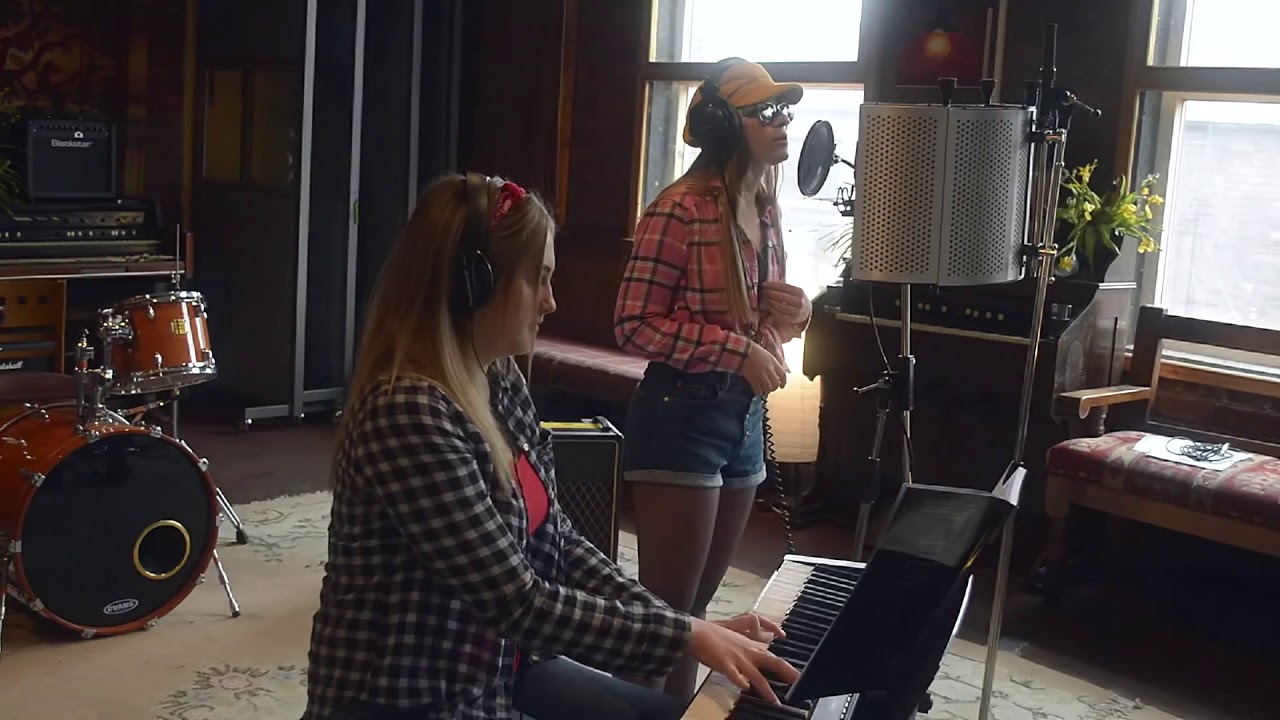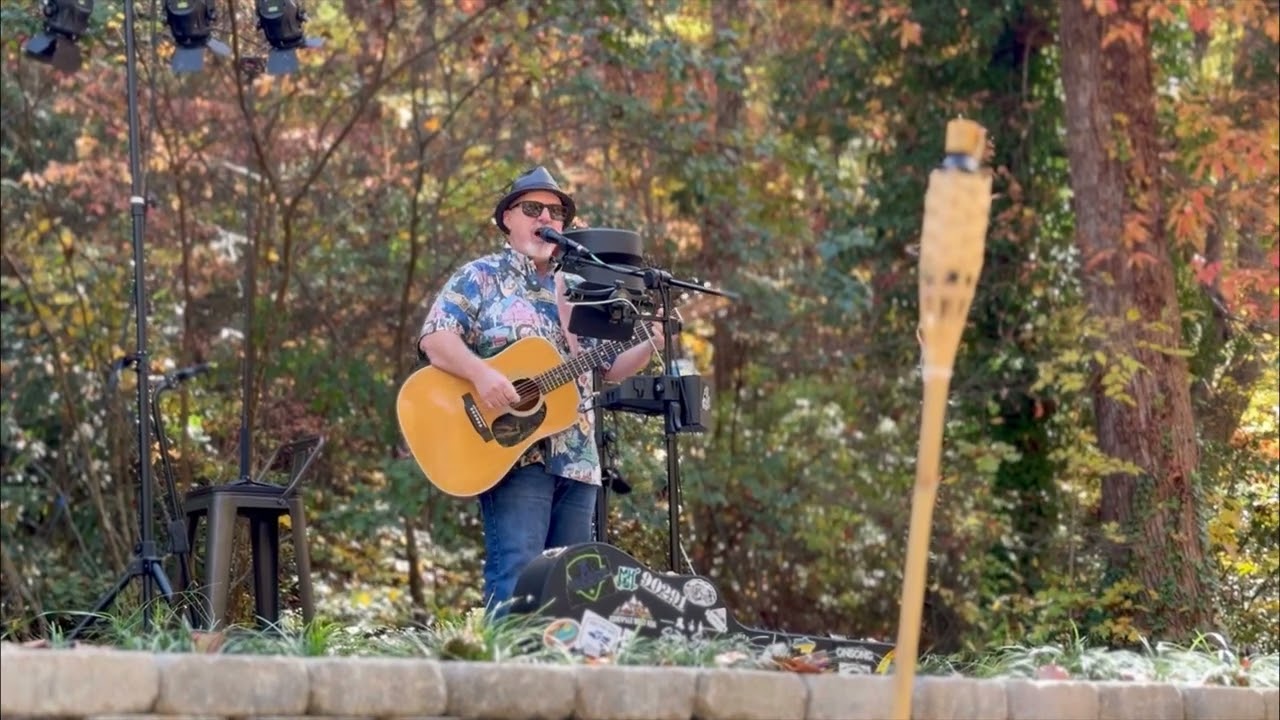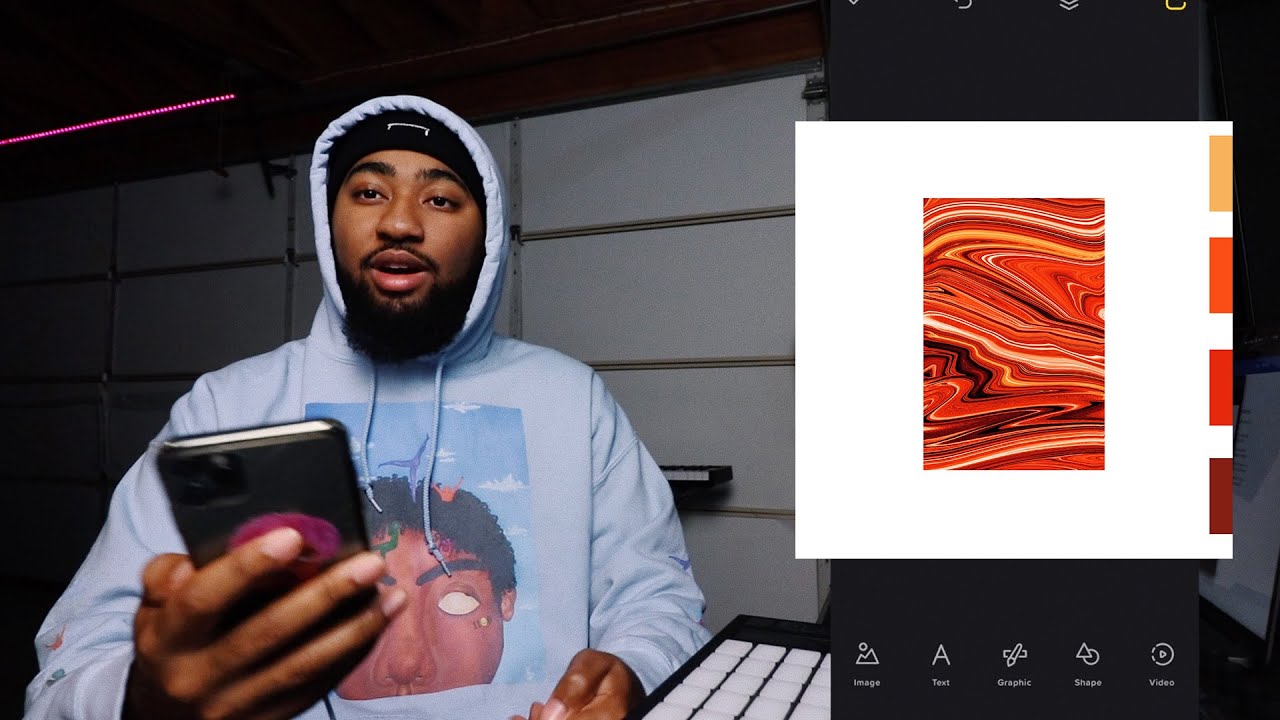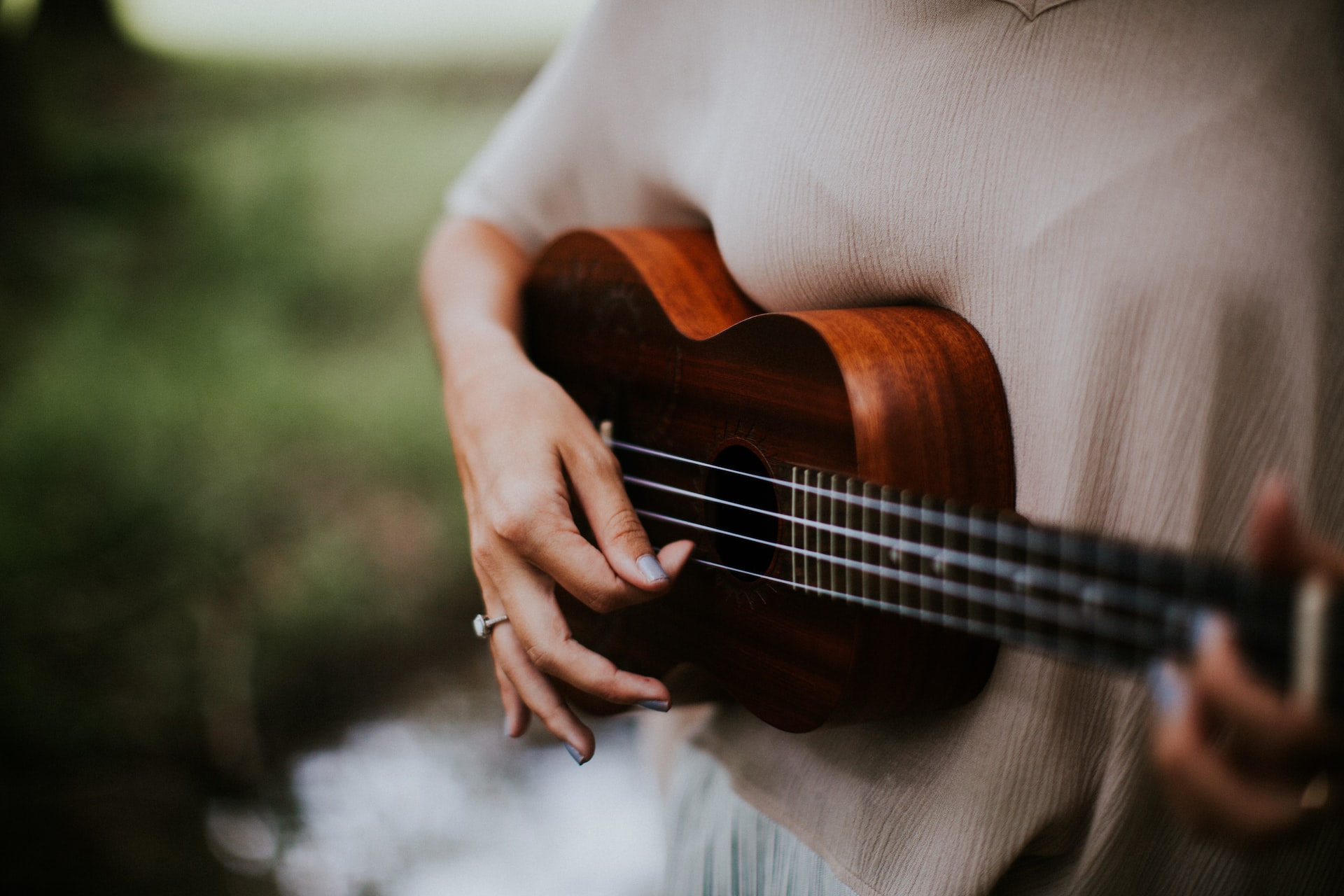Home>Production & Technology>Cover Song>How To Perform A Great Cover Song


Cover Song
How To Perform A Great Cover Song
Modified: January 22, 2024
Learn how to perform a captivating cover song and make it your own. Discover tips, techniques, and strategies to create a memorable musical rendition.
(Many of the links in this article redirect to a specific reviewed product. Your purchase of these products through affiliate links helps to generate commission for AudioLover.com, at no extra cost. Learn more)
Table of Contents
- Introduction
- Choosing the Right Song
- Analyzing the Original Version
- Putting Your Own Spin on It
- Arranging the Music
- Working on Vocal Technique
- Practicing with the Band/Instrumentalist
- Incorporating Stage Presence and Emotion
- Recording and Producing the Cover Song
- Promoting and Sharing Your Cover Song
- Conclusion
Introduction
Cover songs have become a popular way for musicians to showcase their talent and pay homage to their favorite artists. A good cover song not only captivates listeners but also provides a fresh perspective on a beloved track. Whether you’re a solo performer or part of a band, learning how to perform a great cover song can elevate your music career and connect you with a broader audience.
In this article, we will explore the essential steps to creating a remarkable cover song. From selecting the right song to perfecting your vocal technique, arranging the music to capturing the right emotion, we will guide you through the process of creating a memorable rendition that stands out.
Before we delve into the specifics, it’s important to note that a cover song is not just about replicating the original. It’s an opportunity to infuse your personal style and creativity into the music, making it uniquely yours. By following the steps outlined here, you’ll be well on your way to performing a cover song that leaves a lasting impact.
Choosing the Right Song
The first step in performing a great cover song is selecting the right track. You want to choose a song that resonates with you personally and showcases your strengths as a musician. Here are some factors to consider when choosing a cover song:
- Genre and Style: Select a song that aligns with your musical genre and style. Whether you prefer rock, pop, blues, or country, make sure the cover song feels authentic to who you are as an artist.
- Originality Factor: Look for songs that have a timeless appeal but are not overly covered. While it’s tempting to choose a popular hit, consider exploring lesser-known tracks that allow you to put your own creative spin on the music.
- Emotional Connection: Choose a song that resonates with you on an emotional level. This connection will shine through in your performance and make the song more relatable to your audience.
- Audience Engagement: Consider your target audience and their musical preferences. Choose a song that will captivate and engage your listeners, whether it’s a crowd-pleasing classic or a contemporary hit.
- Vocal Range and Ability: Assess your vocal range and ability to ensure the song is within your capabilities. While it’s great to challenge yourself, it’s important to choose a song that allows you to showcase your vocal strengths.
Remember, the goal is to choose a song that you feel confident performing and that showcases your unique talents. Take your time in the selection process and consider seeking feedback from fellow musicians or trusted listeners to gain different perspectives.
Analyzing the Original Version
Once you’ve chosen a cover song, it’s important to thoroughly analyze the original version. By dissecting the original, you’ll gain a deeper understanding of the song’s structure, melody, and lyrics. Here are some key aspects to consider when analyzing the original version:
- Song Structure: Pay attention to the overall structure of the song, including the verses, choruses, bridges, and any other sections. Take note of the order and repetition of these sections, as it will influence your cover version.
- Melody and Chords: Study the melody and chord progressions used in the original. Understand how they contribute to the mood and flow of the song. Consider whether you want to stay faithful to the original arrangement or add your own twists.
- Lyrics and Story: Dive deep into the lyrics and the story they tell. Identify the emotions and themes conveyed and think about how you can connect with and convey these elements in your own performance.
- Instrumentation and Production: Take note of the instruments and production techniques used in the original recording. While replicating these exactly might not be feasible, understanding the choices made can help guide your own arrangement.
- Signature Elements: Pay attention to any unique or distinctive elements in the original version, such as instrumental solos, vocal ad-libs, or specific vocal techniques. These signature elements can be incorporated into your cover to add a touch of familiarity for the audience.
Analyzing the original version will give you a solid foundation to build upon when creating your own cover. It will help you identify what elements you want to preserve and what elements you might want to tweak or reinterpret to make the song your own.
Remember, the goal is not to simply imitate the original but to bring your own artistic interpretation to the song. Use the analysis as a starting point, and let your creativity and personal style shine through in your cover version.
Putting Your Own Spin on It
Now that you’ve analyzed the original version, it’s time to put your own unique spin on the cover song. This is where you can showcase your creativity and individuality as a musician. Here are some tips to help you make the song your own:
- Reinterpret the Arrangement: Experiment with different musical arrangements, such as changing the tempo, altering the chord progressions, or adding unexpected instrumentation. These changes can breathe new life into the song and make it stand out.
- Change the Rhythm: Consider tweaking the rhythm and groove of the song to give it a fresh feel. You can incorporate different rhythmic patterns or syncopation to add your unique touch.
- Add Vocal Harmonies: Experiment with vocal harmonies to enhance the richness and depth of the cover. You can add new harmonies to the existing melodies or create entirely new vocal parts to elevate the performance.
- Explore Different Genres: Take the opportunity to explore different genres and fuse them into the cover. For example, you can add a reggae feel to a pop song or give a rock twist to a classic ballad. This cross-genre experimentation can result in exciting and unexpected outcomes.
- Put a Unique Spin on the Instrumentation: If you play an instrument, experiment with different techniques and effects to give the cover song a fresh perspective. Use your instrument to create unique sounds or solos that showcase your skills.
- Inject Personal Emotion: Infuse the cover with your own emotions and interpretations. Connect with the lyrics on a personal level and deliver them with authenticity. This personal touch will resonate with your audience and make the cover song more memorable.
Remember, the goal is to take the original song and make it your own. Don’t be afraid to take risks and think outside the box. Experimentation and creativity are key to creating a cover that stands out and leaves a lasting impression.
Arranging the Music
Arranging the music is a crucial step in creating an impactful cover song. This is where you shape the overall sound and structure of your rendition. Here are some essential tips to consider when arranging the music:
- Start with the Basics: Begin by understanding the original song’s structure and identifying the key components, such as verses, choruses, and bridges. This will serve as the foundation for your arrangement.
- Consider Instrumentation: Determine which instruments will be featured in your cover. Whether you’re performing solo or with a band, choose instruments that complement the song and enhance its overall sound.
- Balance and Dynamics: Pay attention to the balance and dynamics of the arrangement. Ensure that each instrument and vocal part serves its purpose and contributes to the overall musical journey.
- Add Variation: To keep the audience engaged, introduce variations throughout the arrangement. This can include changes in dynamics, instrumentations, or adding instrumental solos to create excitement and capture the listener’s attention.
- Experiment with Transitions: Smooth transitions between sections are crucial for a cohesive and polished cover. Consider using musical bridges or connecting phrases to seamlessly transition from one part of the song to another.
- Explore Harmonies and Counterpoint: Incorporate vocal harmonies and counterpoint to add depth and texture to the cover song. This can elevate the overall sound and create a more intricate and engaging listening experience.
- Pay Attention to Instrumental Details: Add subtle instrumental details and embellishments to make your arrangement stand out. These details could be melodic fills, rhythmic variations, or tasteful ornamentation that add a unique touch to the cover.
- Don’t Forget the Dynamics: Experiment with dynamics to bring the cover song to life. Add moments of intensity and power as well as moments of softness and vulnerability. This will create emotional richness and captivate the listener throughout the performance.
Remember, arranging the music is where you can truly showcase your creativity and make the cover song your own. Take the time to experiment, try different ideas, and find a balance between staying true to the original while adding your unique touch. The arrangement should enhance the emotional impact of the cover and allow you to connect with your audience in a meaningful way.
Working on Vocal Technique
Developing strong vocal technique is essential for delivering a stellar cover song performance. Here are some tips to help you improve your vocal skills and enhance your interpretation of the song:
- Warm up your voice: Prior to practicing or performing, warm up your vocal cords with vocal exercises. This will help relax your muscles and increase vocal flexibility.
- Breathing Technique: Focus on proper breathing techniques to support your voice. Practice diaphragmatic breathing, where you engage your diaphragm and draw air deep into your lungs, allowing for better control and sustaining of your voice.
- Pitch Control: Work on your pitch accuracy by practicing scales, intervals, and melodic exercises. Use a piano or a pitch-correction app to ensure you are hitting the right notes consistently.
- Articulation and Diction: Pay attention to your articulation and diction to ensure clarity in your delivery. Practice enunciating each word and syllable, allowing the audience to understand the lyrics clearly.
- Expressive Phrasing: Experiment with different phrasing and dynamics to add expressiveness and emotional depth to your vocals. Explore gentle nuances, powerful crescendos, and subtle vocal inflections to breathe life into the cover song.
- Vocal Range: Understand and work within your vocal range to highlight your strengths as a vocalist. Avoid straining or pushing your voice beyond its limits. If necessary, consider transposing the song to a more comfortable key.
- Develop Vocal Style: Experiment with different vocal styles and techniques to make the cover song your own. Add personal flair through vocal runs, vibrato, or subtle stylistic shifts that showcase your unique vocal identity.
- Seek Vocal Training: Consider working with a vocal coach who can provide professional guidance and help you fine-tune your technique. Vocal training can help you address specific challenges and reach your full vocal potential.
Consistent practice and dedication to honing your vocal technique will enhance your vocal performance and allow you to deliver a powerful and emotive cover song. Remember to take care of your vocal health by staying hydrated, avoiding vocal strain, and getting enough rest to maintain the longevity of your voice.
Practicing with the Band/Instrumentalist
Collaborating with other musicians is an important aspect of performing a great cover song. Whether you’re working with a band or an instrumentalist, practicing together is crucial to achieving a tight and harmonious performance. Here are some tips for effective band rehearsals:
- Set Clear Goals: Discuss your goals and expectations as a group before starting rehearsals. Establish common objectives and a shared vision for the cover song to ensure everyone is on the same page.
- Learn the Song Individually: Each band member or instrumentalist should learn their respective parts individually before coming together to practice. This will make the rehearsal process more efficient and allow you to focus on fine-tuning the collective sound.
- Practice Timing and Groove: Pay attention to timing and groove during rehearsals. Ensure that everyone is in sync and maintaining a consistent tempo. Practice playing together, listening to each other, and finding a cohesive rhythm that enhances the overall feel of the cover song.
- Communicate and Collaborate: Encourage open communication and collaboration within the band. Share ideas, offer feedback, and be receptive to constructive criticism. Working together as a team will result in a stronger and more unified performance.
- Refine Transitions and Arrangement: Focus on refining transitions between different sections of the cover song. Smooth out any rough edges and make sure the arrangement flows seamlessly. Pay attention to any instrumental breaks or solos and ensure they add to the overall impact of the performance.
- Experiment with Dynamics: Explore different dynamics and volume levels during rehearsals. Experiment with soft and loud sections to create contrast and impact. This will add depth and emotion to the cover song.
- Record and Evaluate: Record your rehearsals to evaluate and identify areas for improvement. Listen back as a group and discuss what worked well and what could be refined. This feedback loop will help you fine-tune your performance and make necessary adjustments.
- Rehearse Performance Elements: In addition to the music, rehearse the performance elements such as stage presence, interaction with the audience, and choreography if applicable. This will enhance the overall impact of your cover song and make it more engaging for the audience.
Consistent and focused band rehearsals are key to achieving a polished and cohesive performance. Remember to maintain a positive and supportive atmosphere during practices, allowing creativity and individuality to flourish. The dedication and effort put into practicing together will undoubtedly elevate your cover song performance.
Incorporating Stage Presence and Emotion
When performing a cover song, it’s not just about the music; it’s also about engaging the audience through stage presence and emotion. Your ability to connect with the crowd and convey the emotional depth of the song can make your performance truly memorable. Here are some tips for incorporating stage presence and emotion into your cover song:
- Connect with the Lyrics: Dive deep into the lyrics and understand the story and emotions behind them. Internalize the meaning of the song and let it resonate within you. This will allow you to deliver a more authentic and heartfelt performance.
- Show Genuine Emotion: Bring your own personal experiences and emotions into the performance. Let the audience feel the raw emotions behind the song through your facial expressions, body language, and vocal delivery.
- Use Eye Contact: Establish eye contact with the audience to make a personal connection. Engage with different individuals in the crowd, and let them feel that you are performing directly for them. This will create a stronger bond and enhance their overall experience.
- Use Body Language: Use your body to express the emotions of the song. Pay attention to your posture, gestures, and movements on stage. Utilize the stage space to convey the energy of the music and engage the audience visually.
- Capture the Essence of the Original Artist: While making the cover your own, also consider incorporating some elements of the original artist’s stage presence. Study their performances and take inspiration from their charisma and stage dynamics.
- Interact with Band Members: Establish a connection with your band members on stage. Engage with them through eye contact, communication, and synchronized movements. This interaction will create a cohesive and dynamic stage presence.
- Utilize Props and Visuals: Consider incorporating props, lighting effects, or visual elements that enhance the song’s message and atmosphere. However, ensure that these additions do not distract from the core performance and message of the cover.
- Practice and Rehearse Stage Presence: Dedicate rehearsal time specifically to develop stage presence. Experiment with different movements, expressions, and stage dynamics. Rehearsing your stage presence alongside the music will help it become more natural and ingrained in your performance.
Remember, stage presence and emotion are intangible aspects that can truly elevate a cover song performance. Your ability to connect with the audience, convey the song’s emotions, and create a captivating stage presence will enhance the overall impact and make your rendition unforgettable.
Recording and Producing the Cover Song
Recording and producing your cover song is a crucial step in bringing your vision to life and presenting a polished and professional final product. Here are some important considerations when recording and producing your cover song:
- Choose a Recording Environment: Select a suitable space for recording that has good acoustics and minimal background noise. Whether it’s a professional studio, a home setup, or a rented space, make sure it meets your requirements.
- Quality Recording Equipment: Invest in good-quality recording equipment to capture the best possible sound. This includes microphones, headphones, audio interfaces, and digital audio workstations (DAWs). Research and choose equipment that suits your budget and recording needs.
- Consider Multitrack Recording: Utilize multitrack recording to capture individual instruments and vocals separately. This allows for greater control during the mixing and editing process, ensuring a balanced and cohesive sound.
- Microphone Technique: Experiment with microphone placement to achieve the desired sound. Consider the proximity effect, polar patterns, and any specific microphone techniques necessary to capture the nuances of your vocals or instruments.
- Editing and Mixing: After recording, spend time editing and mixing the individual tracks. This involves cleaning up any unwanted noise, adjusting levels, panning instruments, and applying effects to achieve a balanced and professional sound.
- Mastering: Once the mixing is complete, consider mastering the final mix to enhance the overall sound quality and ensure consistency across different playback systems. This process involves equalization, compression, and other techniques to optimize the audio for different mediums.
- Add Production Elements: Enhance the cover song by adding production elements such as additional instrumentation, background vocals, harmonies, or samples. These elements can elevate the arrangement and make it more dynamic.
- Consider Professional Assistance: If you have limited experience in recording and production, consider seeking professional assistance. A recording engineer or producer can bring their expertise and help you achieve the desired sound for your cover song.
- Quality Control: Regularly listen to your mix on different playback devices and in different environments to ensure its quality. Make adjustments as necessary to achieve a balanced and consistent sound that translates well across various listening platforms.
- Finalize the Cover Song: Once you are satisfied with the mix, finalize the cover song by exporting it to the desired file format. Add ID3 tags, artwork, and any accompanying information for a professional presentation.
Recording and producing your cover song requires patience, attention to detail, and a commitment to achieving the desired sound. Don’t be afraid to experiment and make revisions along the way to ensure that the final result aligns with your artistic vision.
Promoting and Sharing Your Cover Song
Once your cover song is recorded and produced, it’s time to promote and share it with the world. Here are some effective strategies to help you get your cover song noticed and reach a wider audience:
- Create a Compelling Online Presence: Utilize social media platforms, such as YouTube, Instagram, Facebook, and Twitter, to share your cover song. Create engaging posts, share behind-the-scenes footage, and interact with your audience to build a strong online presence.
- Optimize Your SEO: Use strategic keywords in your video title, description, and tags to increase the visibility of your cover song in search engine results. This will help people who are searching for similar songs or artists to discover your rendition.
- Share on Music Streaming Platforms: Upload your cover song to popular music streaming platforms like Spotify, Apple Music, and SoundCloud. Create playlists, engage with fans, and promote your cover through these platforms to reach a wider audience.
- Create a Music Video: Consider creating a music video for your cover song. A visually captivating video can significantly enhance the viewing and listening experience, making it more likely to be shared and gaining more exposure.
- Collaborate with Others: Collaborate with other musicians or content creators who share a similar audience. This can help you tap into their fan base, gain new followers, and build mutually beneficial partnerships for cross-promotion.
- Engage with Your Audience: Respond to comments and messages from your audience. Interact with supporters and show appreciation for their feedback. Building a genuine connection with your fans can help foster loyalty and encourage them to share your cover song with their network.
- Submit to Cover Song communities: Submit your cover song to websites, blogs, and online communities dedicated to featuring cover songs. This can expose your rendition to a dedicated audience that appreciates and shares cover music.
- Reach Out to Influencers and Music Bloggers: Research and identify influential bloggers, social media influencers, and music curators who align with your cover song’s genre or style. Send them personalized messages or emails and request them to feature or share your cover on their platforms.
- Perform Live: Look for opportunities to perform your cover song live at local venues, open mic nights, or virtual concerts. Engage with the audience and promote your online platforms during your performance to drive traffic and gain new fans.
- Encourage Sharing and Engagement: Encourage your listeners to share your cover song with their friends and followers. Create social media challenges or contests to incentivize sharing and engagement. Engage with fans who share your cover and show appreciation for their support.
Promoting and sharing your cover song requires a mix of online visibility, engaging content, and strategic outreach. Be proactive in promoting your cover song, and adapt your strategies as you gain insights into what resonates with your audience. With persistence and a well-executed promotional plan, your cover song can gain traction and reach a wide and appreciative audience.
Conclusion
Performing a great cover song is a journey that requires careful song selection, artistic interpretation, and attention to detail. By following the steps outlined in this article, you can create a cover song that not only pays homage to the original but also reflects your unique style and passion as a musician.
Choosing the right song is the first crucial step. Consider your genre, audience, and personal connection to the song to ensure a meaningful rendition. Analyzing the original version allows you to understand its structure, melody, and lyrics, giving you the foundation to transform it into your own creation. From there, you can put your own spin on the cover by reinterpreting the arrangement, experimenting with different genres, and injecting personal emotion into your performance.
Arranging the music involves careful consideration of instrumentation, dynamics, and transitions to create a cohesive and captivating sound. Working on vocal technique ensures a strong and expressive performance, while practicing with the band or instrumentalists helps achieve a tight and harmonious rendition.
Incorporating stage presence and emotion adds another dimension to your performance, allowing you to connect with your audience on a deeper level. Recording and producing the cover song require attention to technical details, such as sound quality and mixing, to present a polished final product.
Promoting and sharing your cover song is essential for reaching a wider audience. Utilize online platforms, collaborate with others, and engage with your fans to create a strong online presence and share your cover with the world.
In conclusion, performing a great cover song is a labor of love that involves creativity, skill, and dedication. By following the steps outlined in this article and infusing your own artistic touch, you can create a cover song that resonates with your audience and leaves a lasting impression. So, embrace the challenge, let your passion shine, and enjoy the journey of bringing your unique interpretation to the world.











